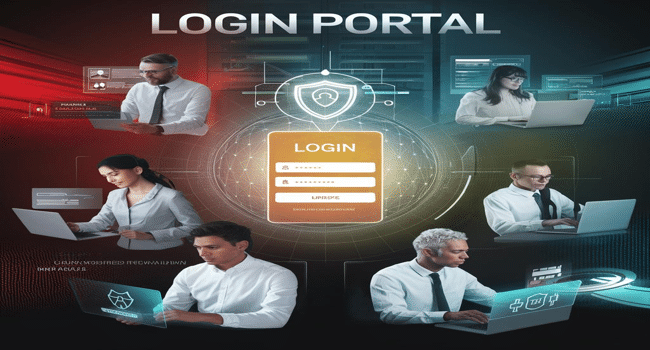Table of Contents
Employee login portals serve as the primary digital gateways to your organization’s most critical assets, including internal communications, proprietary databases, customer information, and financial records If compromised, they can lead to devastating breaches.
Recent projections highlight the urgency of this problem. By 2025, professionals estimate that 93% of cyberattacks will originate from tries to make the most vulnerabilities in login systems, Cementing them as hackers’ most important goal.
This trend reflects attackers’ developing sophistication in leveraging techniques like phishing campaigns, brute-pressure assaults, and credential-stuffing bots to bypass vulnerable authentication measures. As businesses undertake advanced cybersecurity equipment, hazard actors increasingly more cognizance on the human and technical weaknesses inherent in login tactics—making previous passwords, unpatched software, and untrained personnel low-hanging fruit.
Why Employee Login Portals Matter
1. They’re the Most Targeted Entry Point
Cybercriminals focus on login portals because they provide direct access to:
– Sensitive data (customer records, financial reports).
– Internal systems (email, cloud storage, HR databases).
– Third-party tools (payment processors, project management software).
Key statistics:
– Over 2,200 cyberattacks occur daily, with 1 attack every 39 seconds .
– 81% of breaches involve stolen or weak passwords .
– 70% of ransomware attacks target small businesses, often through compromised employee logins .
2. The Cost of Failure Is Catastrophic
A single breach can cripple a business:
– Financial loss: The average data breach costs $4.88 million .
– Downtime: Companies lose $8,500 per hour during ransomware lockdowns .
– Reputation damage: 60% of small businesses shut down within 6 months of a breach .
—
Common Threats to Login Portals
1. Phishing Attacks
– How it works: Hackers send fake login pages or emails to trick employees into revealing credentials.
– Impact: Phishing causes 40% of breaches, costing $4.88 million per incident .
-Example: A 2024 healthcare breach exposed 276 million records after employees clicked phishing links .
2. Credential Stuffing
– How it works: Hackers use stolen passwords from other breaches to access employee accounts.
– Risk: 65% of people reuse passwords across work and personal accounts .
3. Insider Threats
– Employees or contractors may intentionally leak credentials or mishandle access.
– Stat: 68% of breaches involve human error or misuse .
Best Practices to Secure Login Portals
1.Enable Multi-Factor Authentication (MFA)
MFA blocks 99.9% of automated attacks by requiring a second verification step (e.g., a phone code) .
Table 1: MFA Adoption vs. Breach Rates
| MFA Status | Breach Likelihood |
| Enabled | 0.1% |
| Not Enabled | 81% |
Source: IBM Security, 2025
2.Enforce Strong Password Policies
– Require 12+ character passwords with mixed symbols.
– Use a password manager to generate and store credentials securely .
3. Monitor Login Activity
– Deploy AI tools to flag unusual login attempts (e.g., logins from unfamiliar locations) .
– Stat: Companies using AI detect breaches 80% faster .
4. Train Employees Regularly
– Only 1.6% of leaders can identify phishing scams, highlighting the need for training .
– Conduct quarterly drills to test response times to fake phishing emails.
Real-World Examples of Login Portal Failures
1. Healthcare Sector Breach (2024)
– Cause: Phishing emails compromised nurse login credentials.
– Impact: 10.93 million patient records exposed, costing $10.93 million .
2. Microsoft Systems Outage (2024)
– Cause: A faulty software update bypassed login security checks.
– Impact: 3,000+ flights delayed, $5.4 billion in losses .
How to Respond to a Login Portal Breach
1. Isolate Affected Systems: Disconnect compromised accounts immediately.
2. Reset Credentials: Force password changes for all employees.
3. Audit Access Logs: Identify unauthorized activity using AI monitoring tools .
4. Notify Stakeholders: Inform customers and regulators within 72 hours to avoid fines .
Conclusion: Protect Your Gateway
Employee login portals are the frontline of cybersecurity. With attacks growing more sophisticated, businesses must prioritize:
– MFA adoption
– Employee training
– Real-time monitoring
By securing login portals, you protect not just data—but your company’s future.
Read more on KulFiy
